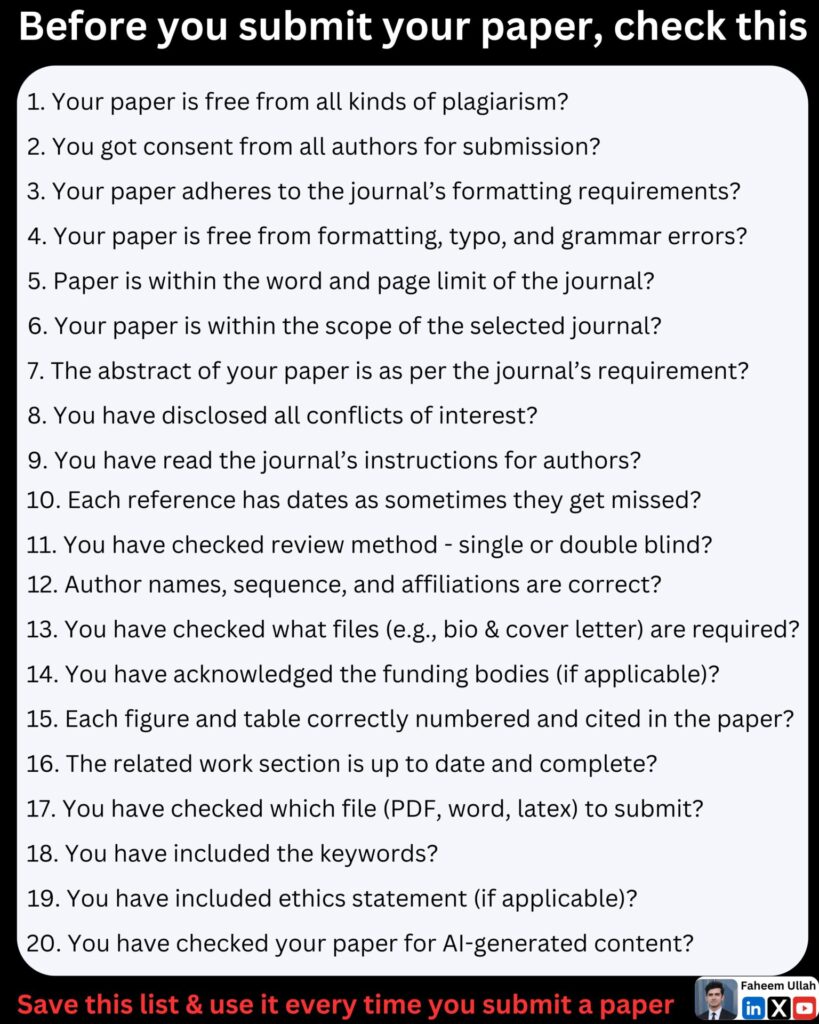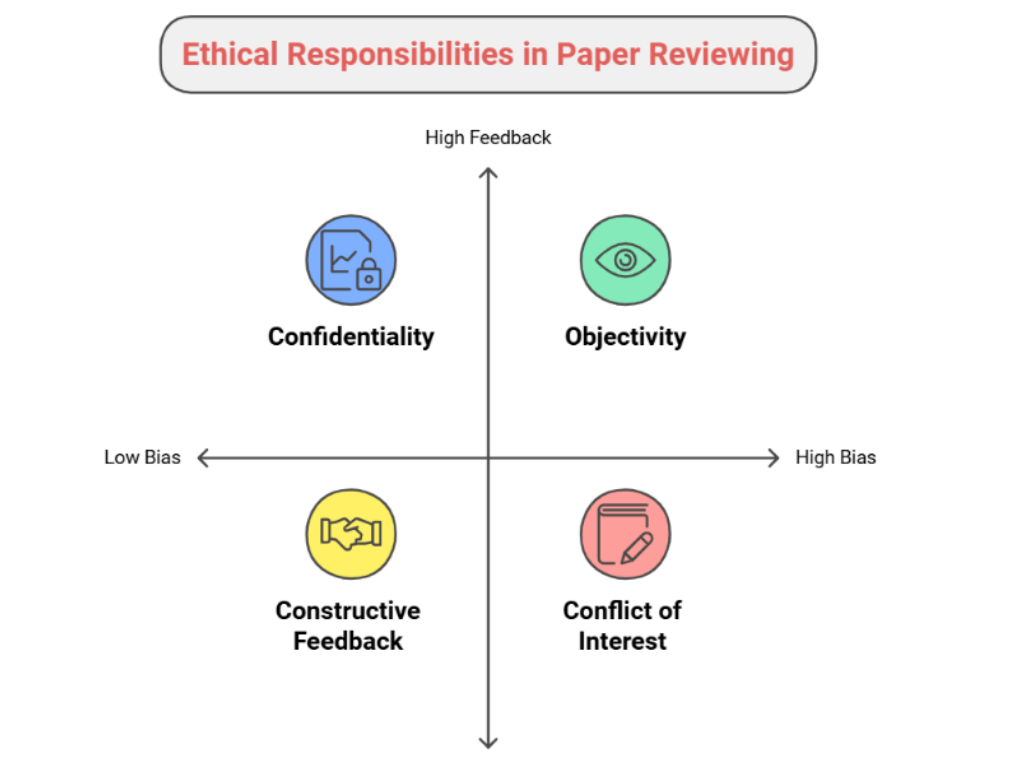
Are you a PhD student / researcher?
Meet Jenni AI – your best research assistant.
How can Jenni AI help you in your research?
- Find citations for your manuscript as you write
- Refine your manuscripts
- Extract data from multiple papers in seconds
- Automatically manage your references
Try Jenni AI – www.jenni.ai
Writing a research paper is hard work. But submitting it to a journal can feel even harder. Many researchers spend months or even years doing their study, only to face rejection because of small mistakes in the submission process. The good news? Most of these mistakes are avoidable if you follow a proper checklist.
In this newsletter, I will walk you through 20 essential checkpoints every researcher should go through before clicking that “Submit” button. Think of this as your step-by-step guide to ensure your manuscript is polished, professional, and ready for peer review.

1. Check for Plagiarism
Your research paper must be original. Even unintentional copying can be considered plagiarism. Always run your manuscript through plagiarism detection software. Make sure all borrowed ideas are properly cited.
2. Confirm Author Consent
Never submit without the consent of all co-authors. Everyone who contributed should review the final draft. This avoids ethical issues and builds trust among collaborators.
3. Follow Journal Formatting
Every journal has its own formatting style. This includes font, spacing, citation style, headings, and even figure placement. Submitting in the wrong format is one of the quickest ways to face rejection.
4. Fix Grammar and Typos
A strong research paper can look weak if full of mistakes. Use proofreading tools, but also ask a colleague to review it. Fresh eyes catch errors that you may miss.
5. Stay Within Word and Page Limits
Journals set strict word and page limits. If your research paper is too long, trim unnecessary content. Reviewers appreciate clarity and conciseness.
6. Match the Journal’s Scope
Don’t waste time submitting to a journal that doesn’t fit your research topic. Make sure the journal publishes work in your field. A mismatch almost always means immediate rejection.
7. Check the Abstract
Your abstract is the first thing editors and reviewers read. Ensure it matches the journal’s requirements in length and structure. It should summarize your research clearly and concisely.
8. Disclose Conflicts of Interest
If you or your co-authors have any conflicts (funding, affiliations, or competing interests), disclose them. Transparency builds credibility and avoids ethical issues later.
9. Review Author Instructions
Each journal has a detailed “Instructions for Authors” page. Read it carefully. It covers formatting, referencing, figures, supplementary files, and more.
10. Verify References
References are often overlooked. Make sure each reference has all details—authors, title, journal, year, volume, issue, pages, and DOI. Missing dates or wrong citations can look careless.
11. Know the Review Method
Some journals use single-blind review, others double-blind. In double-blind, author names should be hidden. Submitting the wrong version can delay your review.
12. Correct Author Details
Double-check names, sequence, and affiliations. Author order matters and often indicates contribution level. Mistakes here can lead to disputes later.
13. Attach Required Files
Journals usually ask for more than just the manuscript. They may need a cover letter, author bios, data availability statements, or supplementary material. Check the list before submission.
14. Acknowledge Funding Bodies
If your research was funded, acknowledge the grant providers. Many journals require this, and it shows accountability.
15. Fix Figures and Tables
Every figure and table should be numbered in order, titled properly, and cited in the text. Low-quality images or missing citations frustrate reviewers.
16. Update Related Work Section
The literature review must be current. Add recent studies to show that your research is relevant and connected to ongoing debates in your field.
17. Choose the Right File Format
Some journals want Word files, others want LaTeX, and many accept only PDFs. Submitting in the wrong format may cause delays.
18. Add Keywords
Keywords help index your paper for search engines and databases. Pick terms that reflect the main focus of your study. Avoid overly generic words.
19. Include Ethics Statement
If your research involves human or animal subjects, an ethics statement is often required. Don’t skip this—it’s a major ethical requirement.
20. Check for AI-Generated Content
Many journals are now screening for AI-generated text. While using AI tools for support is fine, ensure that your manuscript reflects your own analysis and originality.
Why This Checklist Matters
Following this checklist reduces the risk of desk rejection. Editors receive thousands of research papers. A clean, well-prepared manuscript signals professionalism and increases your chances of acceptance.
Think of this as the final polish. You’ve already done the hard part—designing experiments, collecting data, and writing the paper. These checks are the finishing touches that make your submission strong and credible.
Final thoughts
Submitting a research paper is stressful. But a structured checklist makes it manageable. Next time you are about to send off your research, revisit these 20 points. Print the list. Pin it on your desk. And use it every time.
Your research deserves the best chance to be seen, read, and cited. Don’t let small mistakes stop big ideas from reaching the world.
👉 Action Step: Save this checklist as your submission routine. The more you use it, the fewer rejections you’ll face due to technical or formatting errors.
Don’t forget to read: AI Tools for Literature Review
Best of Luck..




